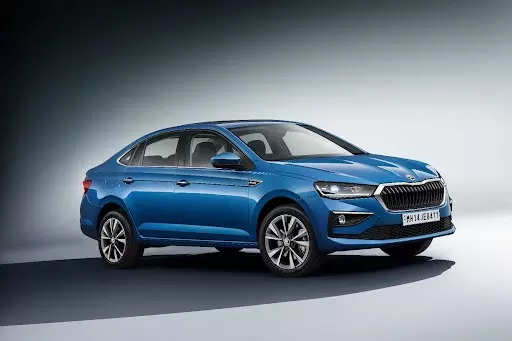
New Delhi:
In the domestic passenger vehicle market ruled by SUVs, Skoda has unveiled a midsize sedan called Slavia. It will be launched during the first half of next year, and will compete with the likes of Honda City, Hyundai Verna, and Maruti Suzuki Ciaz.Skoda’s ambition is to lead the segment, with monthly sales of 2,500 to 3,000 units in the “long term”. However, that may not be enough to give the Czech carmaker and its German parent Volkswagen the critical volumes. Therefore, a volume segment entry for Skoda is imminent.
“If you look at where the volume is, it is clearly below Slavia in terms of positioning. Yes, we’ll look at where the volume is, where the potential is, and what’s the next best body style to bring to the market,” Zac Hollis, brand director, Skoda Auto India, told ETAuto. The model/s will be based on the same MQB-AO IN as the Slavia and the Kushak SUV are based.
If you look at where the volume is, it is clearly below Slavia in terms of positioning. Yes, we’ll look at where the volume is, where the potential is, and what’s the next best body style to bring to the marketZac Hollis, Brand Director, Skoda Auto India
Skoda’s first model in India, Octavia, paved the way for the then unknown Czech car brand in the country. However, as the journey progressed, Skoda couldn’t build its growth story well. Higher maintenance costs, and unsatisfactory after sales support in the dealership network were some key reasons. Limited market reach also affected growth. Work on resolving those issues started simultaneously with the model development projects under the ‘India 2.0’ strategy.
Hollis said that the service costs issues have been resolved to a great extent by the localised MQB platform for India. As a custodian of the brand, he had to get all customer feedback and take actions accordingly for Skoda, and Volkswagen’s ‘India 2.0’ strategy, to have a chance at success.
Hollis had to do more than just take measures to reduce maintenance costs. People said, “Yes, we love your cars but you are expensive to own, you don’t have a service centre near me, you haven’t delivered me good service in the past.”
“My job in the last two years has been to kick those butts,” he said. As a result, some of the dealers had to part ways with Skoda.
While engineers in the technology centre in Pune worked closely with their colleagues in the Czech Republic to develop Kushaq and Slavia, Hollis and his team worked with dealer partners in overhauling the culture in the dealership network. “The efforts are yielding results. I am pleased to say it worked because in the past two years customer complaints have fallen by 60% and coming down further,” he said.
In order to address the feedback of inadequate reach, Skoda is ramping up its workshop network increasing them from 60 last year, to around 90 now and to 130 “very shortly”. That will be crucial for the brand to drive into volume segments.
“In the metro cities, we’re bringing in more investors, because that will bring in more competition and we all know competition is good for the customer as well,” Hollis said.
About the strategy to bring in the Slavia sedan when the customer is looking at SUVs, Hollis said, “When you launch new cars, it automatically boosts the segment because you attract people to the segment. The new cars’ heavyweight marketing campaigns bring people to the showroom, and that boosts the segment. If you don’t bring new cars to the segment, it falls. It’s natural.”
With bookings open for the new Slavia, and a Volkswagen version to join the segment later, Skoda and its parent company hope that the sedan segment’s and their fortunes would get better.
Also Read:















